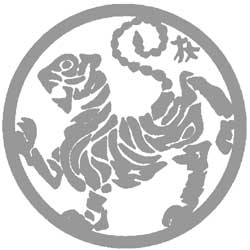
Japan Karate Association of Wisconsin
Karate Ranking
The colored belt ranking system used by the Japan Karate Association of Wisconsin is based on similar systems found in other Japanese martial arts. Karate ranking is based on technical competence and character development. It measures one's improvement, provides valuable feedback and helps to motivate the student towards reaching his or her goals.
Belt ranking in our dojo uses a system with 9 major levels, or Kyu. 9th Kyu (white belt) is the lowest, and 1st Kyu (high brown belt) is the highest. After the Kyu are the Dan, or black belt degrees. 1st Dan black belt (Shodan in Japanese) is the lowest and 10th Dan (Ju-Dan in Japanese) black belt is the highest. A JKA Wisconsin student starting as a child can expect to train 6-8 years to earn the rank of 1st Dan black belt. Adults can achieve 1st Dan in a shorter period of time, sometimes as quickly as 2 years, but only if assiduously and consistently training during that entire time. In either case, this level is not considered an end, but a new beginning in karate training.
Intermediate belt ranks, called Provisional ranks, are also sometimes awarded to students from white belt to purple belt. These ranks are not Full Kyu levels but stepping stones before and between full ranks. An example of the first provisional rank that our youngest students are likely to encounter is represented by a white belt with a yellow stripe.
In addition to Full Kyu and Provisional ranks, there are also black rank stripes that can be earned on the student's existing belt. There are three stripe levels between each belt rank in the youth program, and there can be one stripe level between each full rank in the adult program.
Students are not judged in comparison to one another, but are judged against a minimum standard necessary to earn each specific rank. Judges will take into consideration the age, individual progress and improvement of each student. Some specific technical areas of importance include: (1) the ability to move correctly and smoothly from one stance to another (suriyashi, tsugi-ashi, and fumi-ashi in Japanese) , (2) weight distribution in stances, (3) breathing in correspondence with body movements (Ibuki in Japanese: a MOST important concept), (4) coordination, (5) eye-vector in combination with techniques (mesen in Japanese), (6) physical endurance in stance work, (7) proficiency in kata and knowledge of application of kata, (8) ability to focus (zanshin in Japanese: "mental follow-through"), (9) proper use of the hips in EVERY technique, (10) proper usage of the different striking surfaces of the hands, arms, feet and legs, (11) knowledge of effective target areas.
Students participating in a promotion exam are responsible to make themselves familiar with all of the requirements and judging criteria for their specific level of promotion. Also, it is important to remember that these requirements are only part of the test - regular class time, attitude, spirit and attendance are also taken into consideration.
